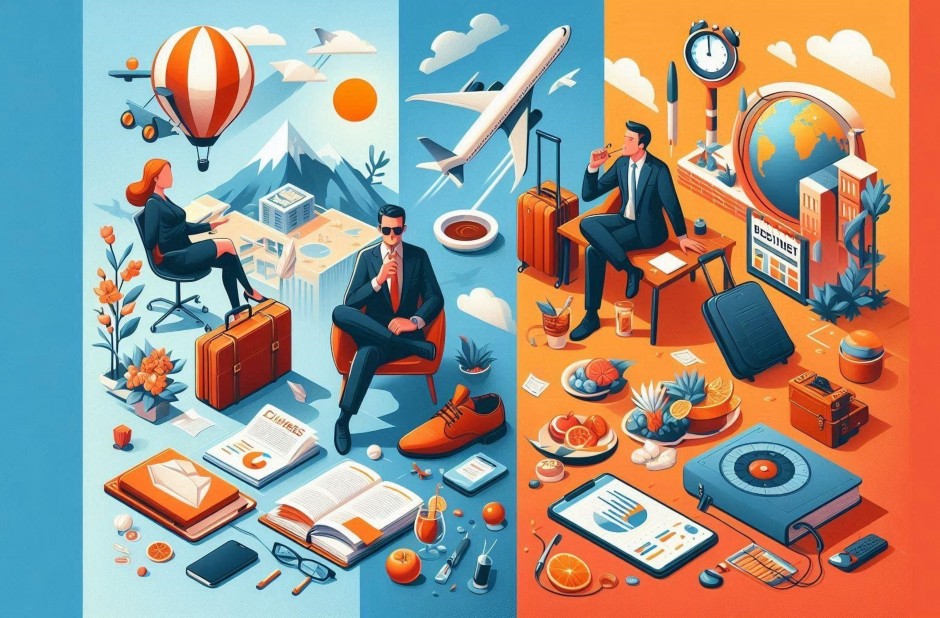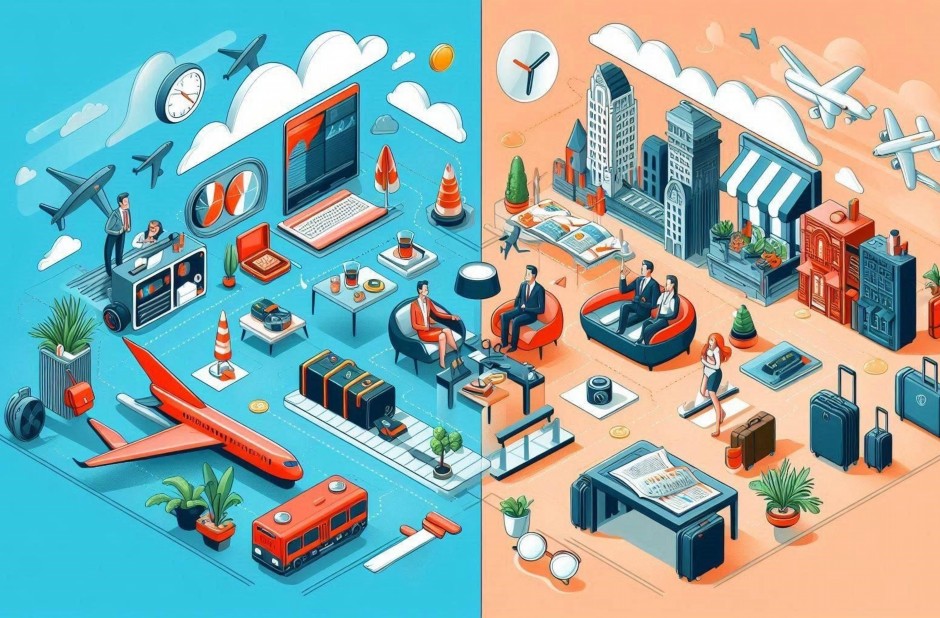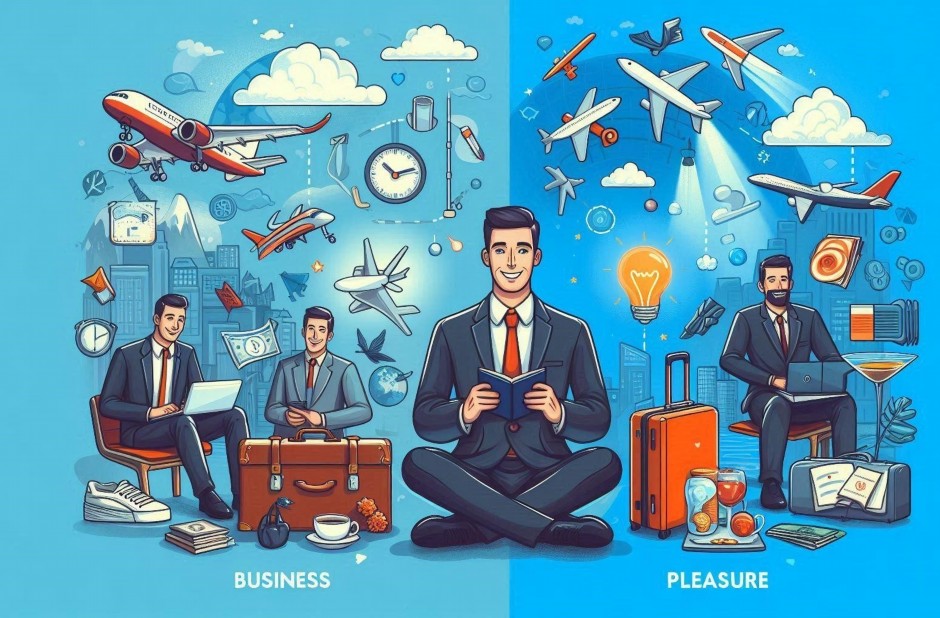When it comes to travel, not all journeys are created equal. Business and leisure travel may share airports, airplanes, and hotel rooms, but the purpose, mindset, and strategy behind each type are vastly different. Understanding these distinctions can help travelers better plan their trips and get the most out of their experience—whether they're closing a deal or chasing a sunset.
Purpose and Planning
The most obvious difference between business and pleasure travel lies in the goal of the trip. Business travelers typically have a tightly scheduled agenda with meetings, conferences, or events that determine where and when they go. Leisure travelers, on the other hand, have the freedom to plan based on relaxation, sightseeing, or personal interests.
As a result, planning differs significantly. Business travelers prioritize efficiency and logistics—flight times, hotel proximity to the meeting venue, and reliable Wi-Fi. Leisure travelers often focus on attractions, experiences, and accommodation that offers comfort and atmosphere.

Booking Strategies
When booking, business travelers often use corporate travel agencies or company platforms with negotiated rates and loyalty programs. These bookings are made with cost-efficiency and flexibility in mind, as changes are common. In contrast, leisure travelers may search for deals on third-party websites, compare multiple options, and even build multi-destination itineraries.
Leisure travelers also tend to book earlier to secure the best prices, while business travelers might book closer to the departure date to reflect changing schedules. Travel insurance plays a more significant role for leisure travelers as well, covering trip cancellations, luggage loss, and medical emergencies.
Airport Behavior and Priorities
At the airport, business travelers aim to minimize downtime. They often skip duty-free shops and lounges in favor of quiet workspaces, priority lanes, and early boarding. Their carry-ons are streamlined: laptops, chargers, business cards, and minimal clothing for efficiency.
Leisure travelers, however, may explore airport shops, sample food options, and move at a more relaxed pace. They're more likely to check bags, travel with companions or family, and spend time browsing souvenirs or airport experiences.
Onboard Habits
Once on board, business travelers tend to work or rest. Many opt for premium seating to ensure comfort and productivity. They appreciate in-flight Wi-Fi, charging ports, and minimal distractions.
Leisure travelers are more likely to watch movies, read, or sleep. Families may engage in activities with children, and solo travelers often use the time to unwind. In-flight meals and entertainment play a bigger role in their overall experience.
Accommodation Needs
Business travelers typically stay in hotels close to conference centers, airports, or business districts. Priorities include fast check-in/check-out, fitness centers, business facilities, and reliable internet access.
Leisure travelers prioritize comfort, uniqueness, and value. They might choose boutique hotels, vacation rentals, or resorts. Their ideal accommodation offers amenities such as pools, spas, or scenic views—and is often located near tourist attractions.

Technology Use
Technology is essential for both types of travelers, but the usage differs. Business travelers depend on apps that streamline logistics—flight tracking, itinerary management, and ride-hailing services. Collaboration tools and secure networks are essential.
Leisure travelers lean into apps that enhance their experience—translation apps, digital guidebooks, photo editing tools, and social media platforms for sharing their adventures.
Work-Life Balance and Bleisure Travel
The line between business and leisure is increasingly blurred. Many business travelers now add a few personal days to their trip—a trend known as "bleisure" travel. This approach lets them explore the destination after their work obligations, making the most of their time away from home.
Companies are beginning to recognize the value of this hybrid approach, encouraging employees to recharge and explore while on business trips. It also boosts morale and promotes a better work-life balance.
Environmental Considerations
As environmental concerns grow, both business and leisure travelers are rethinking their travel habits. Business travelers are increasingly participating in virtual meetings to reduce carbon emissions, and companies are investing in carbon offsets or choosing greener travel partners.
Leisure travelers often look for sustainable tourism options—eco-lodges, carbon-neutral flights, and ethical wildlife experiences. Conscious travel choices are shaping the industry and influencing how both groups approach their journeys.

Maximizing the Experience
Whether you travel for business or pleasure, a few strategies can enhance your experience:
- Pack light: Versatile clothing and compact electronics help reduce hassle.
- Stay organized: Use apps to keep track of itineraries, confirmations, and expenses.
- Build in buffer time: For both meetings and sightseeing, cushion your schedule to avoid stress.
- Adapt to local time: Avoid jet lag by adjusting your sleep schedule early.
- Stay flexible: Whether plans change due to work or weather, adaptability is key to a smooth trip.
Conclusion
Business and pleasure travel may differ in purpose and pace, but each can be optimized with the right strategy. By understanding your goals and adjusting your approach, you can ensure that every trip—no matter the reason—is successful and fulfilling. Whether you’re racing to a boardroom or heading to a beach, smart planning makes all the difference.
